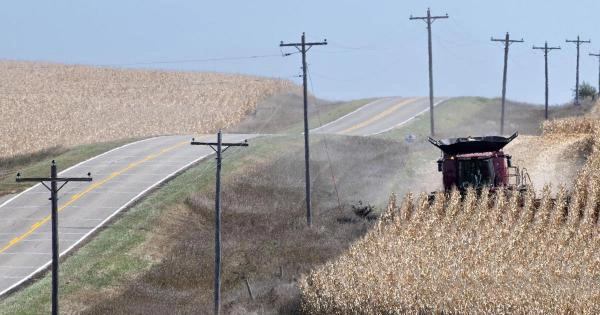“What’s trending” is a common phrase these days. Of course, trends can be found in most everything. In agriculture, the trend of crop yields has a major influence on crop prices and ultimately in the value of farmland.
Since the advent and adoption of hybrid seed corn in the 1930’s and ‘40’s, corn yields have trended higher with an average gain of 2% per year. How does this really translate into local crop yields? Looking at Woodbury County, we found the average yield from 1926-1933 was 34 bushels per acre. Jumping ahead to 1963-1970, corn averaged 71 bushels per acre. The most recent 8 years averaged 205 bushels per acre. This can be measured several ways but around 2% per year is the accepted average.
How does this influence crop prices in the short-term? USDA hosts an annual Outlook Forum in late February. At that time, they release the early projections on crop yields which are based on the trend-line. For 2023, the national trend-line corn yield is 181.5 bushels per acre. Our record national yield was 177 in 2021 and has mostly held in the mid-170’s since 2016.
181.5 becomes the accepted yield which is fed into the supply/demand equation to arrive at estimated production. Demand is also estimated to arrive at the projected ending supply. Ending supply for the year, with fears of either too much or too little supply, is the ultimate influencer of price during the spring and summer.
USDA’s trend-line yield stays in place through spring. Then the arguments begin about “above” or “below” trend-line final yield. This plays out in daily trading on the Chicago Mercantile Exchange. USDA often adjusts estimated yields with their monthly crop production reports during the summer and fall. The “final” number is published in January.
As of late June, drought has sparked the market bulls to bid higher on the expectation of a reduced crop. Let’s say this drought continues all summer. How might that impact yields? Looking across the years, we see that even the worst years come out better than previous bad years.
For example, the last major drought was 2012. The US averaged about 123 bushels per acre and Woodbury County yielded about 135. 1988 was also a major drought. Woodbury averaged 80 bushels per acre. In 1976, it was 61 bushels and 1956 averaged 25 bushels per acre. Defensive traits are bred into modern seed corn, providing a bottom-side uptrend of 2.5% while the top-side trend-line is more like 1.5%.
Soybeans have shown similar yield improvement over time. The national average soybean yield topped 30 bushels per acre for the first time in 1977. Locally, yields over 40 at that time were quite good. The 40 mark was topped nationally in 1994 but not again until 2004. 51.9 was achieved in 2016 and that remains the highest yield, although we have topped 49 each year except one since 2016. Locally, we now see 60-80 bushels per acre or more. From 13.3 bushels per acre 90 years ago to nearly 50 bushels per acre today, the national average yield has increased by about 1.5% annually.
Improving yield potential, better defensive characteristics, and products like crop revenue insurance provide a solid foundation for land values. A key factor in property values is the “anticipation” of future benefits. The anticipation of rising income over time is a major driver of land values. Farmland as an inflation hedge is supported long-term by inflation in crop yields.
This article originally appears in summer edition of Today’s Land Owner, authored by Dennis Reyman, AFM, ARA


